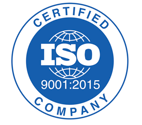The new European Union Medical Device Regulation ("EU MDR") represents one of the most significant and impactful regulations within the medical device industry in decades. The new regulation brings about substantial changes for both medical device companies and Notified Bodies, in an effort to enhance transparency and patient safety. The mandatory deadline for compliance of May 2020 is fast approaching, and if you haven't commenced readiness activities yet, it's time to get started. One area of the regulation that requires immediate attention from Quality and Regulatory professionals relates to Clinical Evaluation Reports, or CERs. CERs, which are required for all medical devices sold in Europe, comprise the formal documentation of the clinical evaluation of the medical device, including the analyzed clinical data to demonstrate that the product is achieving its intended purpose. While CERs have always represented a component of the Technical File, now the requirements and focus on these reports have been greatly expanded and magnified under the EU MDR. Updating CERs to comply with the new regulation is a critical and time-consuming undertaking that requires early and decisive action, diligence, expertise, and appropriate resources. While there are many new requirements that need to be addressed, here are five key points to consider when reevaluating your CERs:
1) Get the first step right: Start with gap assessments. You need to understand where your current CERs, and the processes around those CERs, fall short as compared to the mandates incorporated within the new regulation. Thoroughly understand the weaknesses with your CERs so that they can be remedied effectively. Be sure to have the right individuals involved in performing your gap assessments, as mistakes in this initial step can compromise the entire compliance effort going forward.
2) Readdress equivalence conclusions: The EU MDR significantly tightens the requirements around equivalency conclusions, whereas the ability to leverage a competitor's clinical data will become quite rare. Consequently, more and more time-consuming and costly clinical studies will be need to be performed and documented. Unlike the previous guidance under the MDD, the new regulation clearly addresses and defines equivalence to eliminate potential ambiguity. Annex XIV lays out the technical, biological, and clinical factors that must be thoroughly addressed and supported when updating CERs. It is expected that Notified Bodies will be scrutinizing all equivalence arguments very closely with inherent skepticism, so CERs will need to be carefully updated with clear, detailed, and well-constructed justifications.
3) Ensure full integration: In the past, risk management and clinical evaluation were often addressed as separate documents. Now, however, the CERs must be rewritten and updated to fully integrate risk management concepts, post-market surveillance (PMS), and vigilance. The EU MDR strongly emphasizes the need for companies to intertwine these functions as part of the overall CER development and ongoing maintenance, and Notified Bodies will be checking to ensure appropriate alignment and inter-dependence of these items throughout the CER.
4) This is not a one-time event: Paragraph 11 of Article 61 of the EU MDR states "The clinical evaluation and its documentation shall be updated throughout the life cycle of the device..." The CER must become a living, breathing document that is reviewed and updated regularly. The days of sticking a CER up on a shelf and forgetting about it for years are over. Create a pre-determined schedule that requires all CERs to be reviewed at fixed intervals to ensure they do not become stale. However, don't make the mistake of simply waiting for the fixed intervals to make changes...as new data becomes available, ensure that CERs are updated on the spot.
5) Resource appropriately: All the effort and good intentions will be useless without ensuring that you have the right resources to carry out the crucial activities involved with updating CERs. Analyze the skill sets, workload, and availability of your internal team to determine whether external reinforcements are needed. While EU MDR is relatively new, look for people who have solid experience in writing and analyzing CERs. Don't wait...these folks are being scooped up quickly by others in the industry. This is a key point that will save you a lot of heartache and frustration down the road.
Updating CERs to comply with EU MDR can be an exhaustive, time-consuming process, requiring cross-functional input and coordination, formal oversight, and proactive involvement of both internal and external resources. You will see much more scrutiny in this area from Notified Bodies, including possible unannounced inspections, so ensuring readiness is essential. The consequences of non-compliance, including possible loss of CE mark registration, withdrawing devices from the market, and/or delayed introductions of new devices, can be very destructive for any company. As such, Quality and Regulatory professionals cannot afford to underestimate the time and effort involved.




